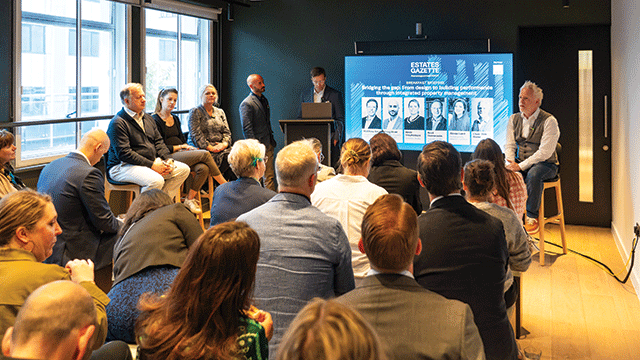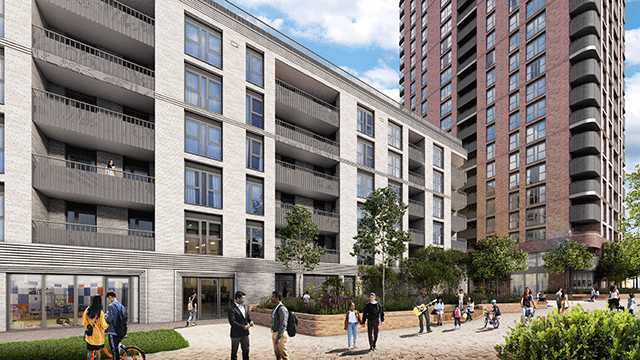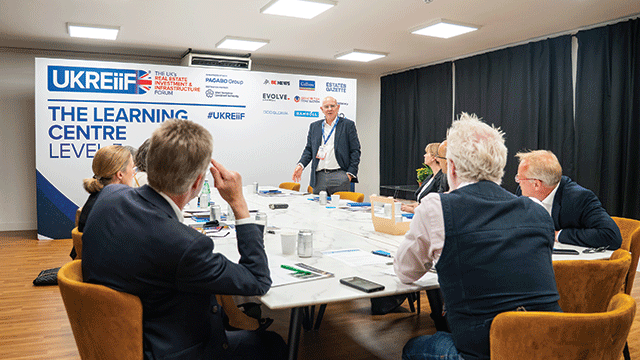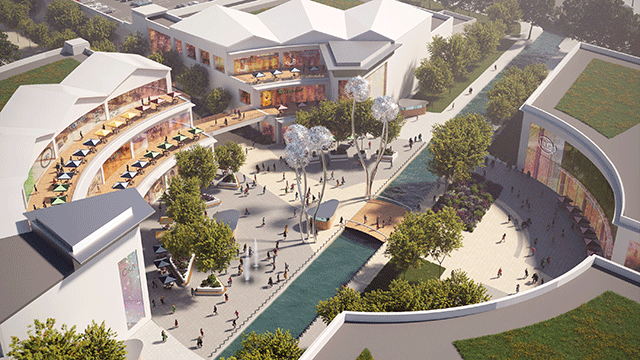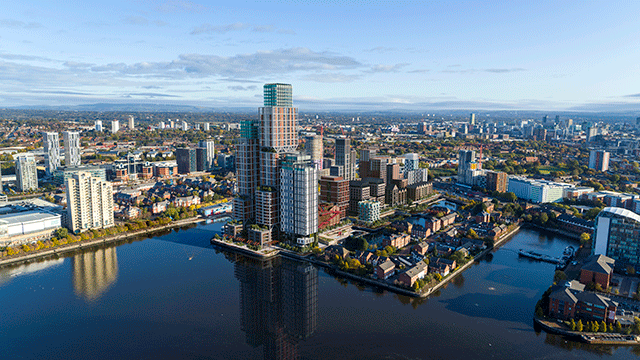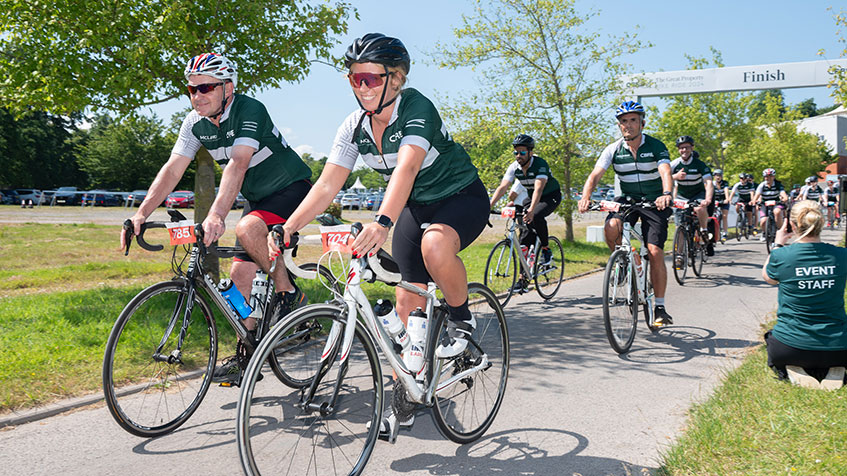46 David Sullivan £600m Roldvale
Premiership club Birmingham City could soon have a new owner. Hong Kong tycoon Carson Yeung has paid around £15m to take a 29% stake. If the takeover goes ahead, Blues chairman David Sullivan, 58, who has already sold shares worth £7.5m to Yeung, will make another £7.5m.
But Sullivan’s other ventures are having a tough time. Profits at Roldvale, his main company, came in at £8.2m on £26.9m sales in 2005, but the company plunged to a £3.2m loss in 2006.
Property, however, is where Sullivan is making his mark now, and his portfolio is valued at £400m. It cost him £7m to build his Essex home 13 years ago, and he recently turned down an £18m offer for the property.
But it was soft porn that brought him to public prominence. He owns the biggest chain of licensed sex shops in Britain, the 90-strong Private Shops empire.
In 1986, he joined forces with his main competitor, David Gold, and launched Sunday Sport. Together, they bought Birmingham City in 1993. Aside from his property portfolio, Sullivan’s assets include a £20m stake in Opera Telecom. This and £29m in salary over the past five years take him to £600m.
49 Sean Mulyran £583m Ballymore Properties
In 1982, Sean Mulryan, 53, a trained stonemason and draughtsman, decided to sell his family home in Tallaght and move into rented accommodation, using the capital to start his business.
With the backing of his wife, he bought a site in Ballymore Eustace and began building houses. His Dublin-based business, Ballymore Properties, is now one of Europe’s largest urban regeneration companies. It is developing 60 acres of the Lower Lea Valley next to the 2012 Olympics site in Stratford he began buying the land more than a decade ago.
Ballymore has also secured contracts worth over £2bn to redevelop the Wood Wharf site in London’s Docklands, and another £200m deal to develop a site in Luton. Mulryan is also busy working on £15bn of projects in eastern Europe and Co Dublin.
In 2005-06, Ballymore showed £7.6m profit on £63.1m sales. With a strong balance sheet and £86.3m net assets, it is a valuable operation. Mulryan, who owns it all, has other assets including a Kildare stud, and is now worth £583m.
50 JP McManus £570m Martinstown Stud
A former bookie, JP McManus is now based in Geneva but is also a top racehorse owner in Ireland, with more than 100 horses in training and a stud in Co Kildare. He is also having a mansion built in his native Limerick.
McManus, 56, can easily afford the outlay. He is reckoned to have made £250m from playing the foreign exchange markets, and, with John Magnier, had a £227m stake in premiership football club Manchester United, until they sold out to Malcolm Glazier in May 2005, netting a £90m profit.
He shared a £125m dividend from the Barchester Healthcare group in 2006 and also shared the £132m proceeds from the sale of a fitness chain. McManus is also active in the property field through Sloane Capital, in partnership with Magnier and Aidan Brooks, the Limerick property developer.
Sloane has been busy of late: a prestige Paris office and retail site was acquired in July 2007 for £439m. It was part of a worldwide expansion drive by Sloane which has seen it buy the Bloomingdale’s department store in New York for £35m earlier this year and two streets of luxury shops in Los Angeles for £150m.
Sloane also has a castle in Dublin, Unilever House in London and the Hilton Hotel at Canary Wharf. With a share of the Sandy Lane hotel in Barbados and an adjacent £21m villa, McManus is easily worth £570m.
51 Liam Carroll & Family £540m Dunloe House (NI)
Liam Carroll spent £115m acquiring a 21.5% stake in Greencore, the Irish sandwich-making and sugar group, from financier Dermot Desmond in 2006. Since then, he has raised that stake to 29.5% in what is being seen as a property play.
Greencore has huge property assets worth at least £400m, and it is believed Carroll wants to acquire them. He is active elsewhere in Ireland on the development front.
He finally received planning permission to develop the £200m site of Anglo Irish Bank’s new headquarters on the North Wall Quay in Dublin’s docklands in July 2007, though his efforts to develop nearly 9,000m2 of warehousing beside Dublin airport were turned down by the local council.
Carroll, 57, became one of the biggest developers and builders of apartments in Dublin during the boom years of the 1990s. A low-key character, he and his wife own Dublin-based Vantive Holdings and Orchard Grove, two companies with £159m net assets in their last accounts.
His huge development portfolio in Dublin, and the Greencore stake, take the Carroll family to at least £540m.
52 Paul Sykes £520m Highstone Group
Paul Sykes is moving out of property into sustainable forestry investments – helping to conserve rainforests and preserve wildlife habitats – through his new Highstone Foundation charity.
Barnsley-born Sykes, 67, was an early developer in London’s Docklands, but it was the Meadowhall Centre outside Sheffield that bought him national acclaim. Some 1,500 acres of redundant steelworks next to the M1 were turned into a new out-of-town centre by Sykes and his partner, Eddie Healey. They sold Meadowhall in 1999 for £1.2bn.
Sykes’ Harrogate-based property company, Highstone Group, is in fine fettle, with £253m net assets in its 2005-06 accounts. We stick with last year’s £520m valuation.
53 Sir Donald Gosling £510m Consolidated Property Investments
Sir Donald Gosling and Ronald Hobson – founders of car park operator NCP – took advantage of investor demand early in the recent boom. They sold their company, Metrose Property, for £112m in 2005 to Invesco UK Property Income Trust. Gosling still has property holdings, in Hildane Properties, helping to keep him at £510m this year.
Gosling, 78, and Hobson started NCP in 1948 as post-war Britain began to recover. When they sold it in 1998, Gosling took a £290m windfall for his stake. An old salt, he served in the Royal Navy as a signalman on HMS Leander after the war. The sea has remained a passion and his latest yacht, also called Leander, is not much smaller than a cruiser at 245ft in length.
But Gosling will have no worries about running costs. Aside from NCP and Metrose, he had a 40% stake in Consolidated Property Investments, which was sold in 2004 for £77m.
54 Lord Ballyedmond £500m Norbrook Laboratories
Lord Ballyedmond, 63, saw his Norbrook Laboratories business raise its sales to a record £90.4m in the year to July 2005. A farmer’s son, Ballyedmond went to New York after leaving school and started work for a pharmaceutical company. In 1969, he returned to Ireland to establish Norbrook Laboratories, now the world’s leading veterinary pharmaceutical company, worth at least £350m.
His extensive property and land interests run to property in Cannes, Dublin and London, and estates in Cumbria, Northern Ireland and the Republic. Ballyedmond is now worth £500m.
54 Asif Aziz & Family £500m Golfrate Group
In November 2006, Asif Aziz’s new business, Criterion Capital, bought the YMCA site in Tottenham Court Road for £25m. It was the latest in an extraordinarily rapid run of acquisitions for a relative newcomer to the UK property scene.
The Aziz family recently sold a building in Victoria Street for £164m and bought the Trocadero in Piccadilly for £200m, with plans for a redevelopment. By mid-2007 the group owned assets worth around £1.5bn in 23 buildings.
Malawi-born Aziz, 40, came to London initially to recover debts owed to his family, which had been trading in Angola for over 30 years. He saw the business opportunities here and bought his first property at auction for £1.9m.
Based in Wimbledon, the Golfrate Group is owned by an Isle of Man trust. With the huge property portfolio and extensive business interests in Africa, the Aziz family is worth £500m after stripping out borrowings of £1bn.
54 The Clarke Family £500m C Le Masurier
The Clarke family scrapped its plans to develop a £25m superstore in Jersey in May. The project involved redeveloping the former 1950s Odeon cinema in St Helier and would have allowed a major supermarket chain into the island for the first time. But the plan was dropped in the face of major local opposition.
Family company Le Masurier said it would continue to subsidise the cinema building and is focusing on new plans for the area.
Le Masurier, now the largest private landowner on the island, owns large tracts of St Helier, retail outlets and pub sites across Jersey.
The death in 2001 of patriarch Fred Clarke led to a refocusing of this secretive family business with the aim of raising asset values.
Although Jersey property values are on the increase after years of stagnation, we still value the Clarke assets at a conservative £500m.
54 Roy Richardson & family £500m Swiftfire
The death of Don Richardson last month robbed the Midlands of one of its greatest developers. With twin brother Roy, Don Richardson had made a name for building shopping centres, most notably Merry Hill in the Black Country but also as far afield as Rome and Salzburg.
The twins left school at 14 and started trading in ex-Army vehicles with their father, later moving into transport and property. They sold Merry Hill in 1992 for a £50m profit and have since been involved in scores of flagship projects in the Midlands.
Their main company, Swiftfire, saw its profits rise sharply from £11.2m to £38m in 2005, while its net assets rose beyond £27m to £163m. We value the business on these net assets. Yet, after the acquisition of the European assets, and taking account of other deals and £54m of salaries in recent years, we reckon the Richardson family, now led by 77-year-old Roy alone, is easily worth a net £500m.
54 Tony Gallagher £500m Gallagher UK
The past 12 months have been very good to Tony Gallagher, who continues to expand his residential investment business. His ongoing land bank of 35,000 plots has risen in value very considerably and several valuable planning consents have been secured.
The Gallagher UK retail park investment portfolio of 3.5m sq ft continues to grow. Gallagher, 56, also has a substantial investment programme in Europe and has acquired in excess of 3m sq ft of retail space in Germany this year he plans to double this next year. He has various other interests in the finance and consultancy business. We value him conservatively at £500m.
54 £500m Ardeshir Naghshineh & Family Targetfollow Group
In March 2007, property tycoon Ardeshir Naghshineh pulled out of the bidding to buy the iconic Earls Court & Olympia exhibition centre in London. But he already has a trophy London asset: in October 2005, his company Targetfollow bought Centre Point, the famous London tower, for £85m and is spending £10m on refurbishing it.
Iranian-born Naghshineh, 55, a civil engineer by training, founded Norwich-based Targetfollow in 1992 as a property group. Today, it has a substantial portfolio of office, industrial and retail buildings in more than 20 towns and cities.
Its parent company, Targetfollow Property Holdings, showed £222.4m net assets in 2005-06. We can also see another £155m of net assets in 17 Naghshineh companies in 2005-06. In all, we reckon that Naghshineh’s total portfolio is now worth around £500m, after debt has been stripped out.
60 The Duke of Bedford £490m Bedford Estates
Planners turned down a £160m Center Parcs holiday village at the Duke of Bedford’s Woburn estate in July 2006. This was a blow for the duke, who has been trying to continue the entrepreneurial activities of his grandfather and father.
Harrow and Harvard-educated Bedford, 45, is well versed in the management of Woburn Abbey estate and house, where his grandfather set up various successful business ventures to pay a £4.5m bill for death duties.
The house and grounds must easily be worth £100m. Our art expert puts a £300m value on the duke’s art collection, but we halve that to £150m to allow for any inheritance tax in the event of a sale.
The duke also has his London estate to fall back on. Bedford Estates owns 170 properties in and around Bedford Square in central London, worth well in excess of £200m. Allowing for any inheritance tax following his father’s death, we stick with a £490m valuation for Bedford.
61 £476m Robert Rayne & Family London Merchant Securities
London Merchant Securities was sold to rival London property group Derwent Valley in November 2007 for £1bn. Robbie Rayne, 58, son of the late Lord Rayne, LMS’s founder, became chairman of the enlarged group, called Derwent London.
Lord Rayne’s death in 2003 robbed London of one of its shrewdest property developers. After war service with the RAF, he turned his family’s tailoring operation into a property business and pioneered development on the fringe of the City. Lord Rayne left £119.6m in his will, excluding assets in France.
The Rayne family had a 37% stake in LMS at the takeover, worth around £370m. LMS had earlier in 2006 demerged its investment division into a new firm called Leo Capital, and the Rayne family has a £76m stake there. We add another £30m for other assets, taking the family to perhaps £476m.
62 £470m Ronald Hobson Consolidated Property Investments
Ronald Hobson is on a roll. In September 2005, he and his partner, Sir Donald Gosling, sold their property company, Metrose Property, for £112m to Invesco UK Property Income Trust. A little more than a year earlier, they had sold Consolidated Property Investments for £77m. The low-key Hobson should have made around £97m from the two deals.
Hobson, 76, originally teamed up with Gosling after the war to build car parks on old bomb sites in London and the rest of Britain.
They sold the parent company, National Parking Corporation, in 1998, collecting around £290m each. Huge dividends prior to that, plus the recent property company sales, keep Hobson at £470m this year.
63 £460m Laurence Kirschel Consolidated Developments
Laurence Kirschel is clearly a man about town, with property prices in Soho and the surrounding areas of central London rising to unheard-of records.
The property press reports that he has received offers for his West End portfolio. This includes Tin Pan Alley at the eastern end of Oxford Street, one of the last undeveloped sites in central London, and developments in Soho. He is not selling, but claims he is focused on transforming Tin Pan Alley into a new cultural quarter for the city.
Kirschel, who recently spent £14.5m buying a building next to Centre Point, set up Consolidated Developments in 1983 with just £5,000 capital. We can now see around £64m of net assets in its 2005 accounts and another, smaller, Consolidated operation.
But these asset values do not take account of his substantial holdings in Soho, which rival the estate of Paul Raymond. With other assets, including some choice Mayfair acreage, we value 44-year-old Kirschel cautiously at £460m.
64 £450m Terry Bramall & Family Keepmoat
Doncaster-based Keepmoat is part of a consortium of developers chosen to drive forward a £200m masterplan for Darlington. The 30ha Central Park site will comprise a mix of commercial and leisure facilities and 600 new homes.
Keepmoat, which is roaring ahead with a 30% annual growth rate, is one of the UK’s biggest regeneration specialists. The largest provider of social housing in the Midlands and north of England, the business dates from 1931, when it was established by Bramall’s late father and a partner.
In 1968, after a stint with Taylor Woodrow, Bramall joined what was still a modest operation. The business started to move forward in the 1970s when, alongside new building, local authorities started to refurbish their housing stock.
A lot of other building companies were not interested. They saw refurbishment work as dirty and complicated, but Bramall realised that it was much more profitable than new-build, and Keepmoat began to carve out a niche reputation.
As a result, by 2005-06, Keepmoat saw profits soar from £33m to over £40.2m on nearly £469m sales, with some 34,000 homes refurbished or built by its subsidiaries. Awarded the title Master Entrepreneur in 2004, Bramall, 64, has retired as chairman but stays on the board.
His family had a 72% stake with trusts in the company, which was sold to the management in a £783m deal backed by Bank of Scotland in August 2007. That would value the Bramall family stake at £563m. But allowing for tax on the sale proceeds and any debt built into sale prices, we cut that back to £430m, then add £15m for past dividends and the near £5m for the net assets of Bramall & Ogden, a small property group owned by the Bramall family.
64 £450m Freddie Linnett & The Murphy Family Charles Street Buildings
Profits at Charles Street Buildings (Leicester) fell slightly from £43.6m to £40.8m on £38.8m sales in 2006. The net assets at the family-owned property group also rose to more than £349m.
Freddie Linnett, 57, is a director and leading shareholder in the business, which was started by her uncles, who came to Britain from Ireland after the war. On their deaths, she inherited their stakes.
She married a top accountant in 1995. We value the business at £370m even today. Other assets, and £65m of dividends from 1995 to 2005 inclusive, take Linnett and the Leicester-based Murphy family to £450m after tax.
64 Richard Caring £450m International Clothing Designs (Holdings)
Richard Caring, 59, may be best known for assembling an investment portfolio that includes restaurants such as The Ivy and Le Caprice the Wentworth golf club in Surrey and London nightclub Annabel’s (the latter was acquired this year for £90m). But he also intends to be a serious property player.
He led a consortium that recently bagged the former US Navy offices on Grosvenor Square, Mayfair. At a price of £250m, Caring appears to have paid £2,500 per sq ft for the site. Experts suggest that, if he rebuilds the site as luxury flats, he may need to charge well over £4,000 per sq ft to make a profit.
Previously, he’d bought the Belgo, Bierodrome and Strada restaurant chains for £57m in September 2005. In June 2007, he sold them for £140m.
A fashion tycoon originally, Caring owns International Clothing Designs (Holdings), a London-based supplier of fashion garments made in the Far East to the likes of Next, Bhs, Top Shop and M&S.
But the once hugely profitable business has suffered as retailers forge their own links in the Orient, and Caring is now moving into other areas. With his trophy assets, his £15m north London home and proceeds from the sale of his stake in fashion designer Amanda Wakeley, plus stakes in other businesses such as the upmarket Whistles, Caring should easily be worth £450m.
64 £450m Steve Morgan Redrow Group
Steve Morgan’s efforts to take a controlling stake in his beloved Liverpool Football Club came to naught when it was taken over by two American billionaires in early 2007. The board consistently rejected his overtures, and he withdrew a £70m offer last year.
Having started his career as a labourer on a building site after abandoning his A-levels, Morgan set up a small construction business in 1974 with a £5,000 loan from his father.
Twenty years later, as one of the biggest housebuilders in Britain, Redrow was floated on the stock market. Morgan retains a stake worth nearly £43m, but he sold almost £240m worth of shares in the float and afterwards when he left the Redrow board in 2000.
He also received £100m for his stake in the De Vere leisure group, which was taken over by developer Richard Balfour-Lynn for £750m last year, and recently shared £75m sale proceeds on a Spanish development with Peter Thomas.
Morgan’s latest venture is Harrow Estates which, aside from property investments, specialises in buying derelict land, cleaning it up and selling it on at a huge profit.
It is starting work on a scheme in Cambridgeshire which could be worth £100m in 2010/11 when completed. After allowing for reinvestment of his Redrow money, his Jersey property, and his developments, 54-year-old Morgan is easily worth £450m.
68 £420m Stephen Vernon Green Property
English property tycoon Stephen Vernon lives in Ireland, where he made his mark as a developer.
The surveyor joined Green Property almost a decade before it was taken private in 2002 via a £700m deal backed by Merrill Lynch and HBOS. Vernon set about selling £1bn of assets to pay down debt and give his backers a return. He now has ambitions to enlarge the business again. “We might go back into the UK with some small developments, just like the old days,” he said recently.
Merrill Lynch cashed in its chips in 2005 and Vernon’s personal stake has increased from 2% to 32%, with HBOS now owning 50%. “This is my business now,” says Vernon, 57. “I’m very glad we did the buyout. The writing was on the wall for us [as a public company] and I think predators would have emerged.”
Green Property still owns the Blanchardstown shopping centre, Ireland’s biggest retail complex, reckoned to be worth £1bn. Other assets include a factory outlet centre in Killarney, offices let to eBay in Leopardstown, a small stake in a Goldman Sachs office in London, and a Slough office development. Green Property’s parent, Rodinheights, made a profit of around £28m in 2005.
The Green property portfolio should easily be worth £1.2bn, valuing Vernon’s stake at around £384m. Past bonuses and any share of the £82m dividend paid out by Green property in 2006 should take Vernon to £420m.
69 £416m Sir Michael Smurfit & Family The K Club
Sir Michael Smurfit, 71, left Smurfit Kappa recently after 53 years. He had built up the company, co-founded by his father in Dublin 74 years ago, into Europe’s largest integrated packaging firm. It refloated on the stock market in March 2007 valued at £2.3bn, valuing Smurfit’s 4.9% stake at £113m. He will also get £7.7m as part of his departing package.
But it is outside his day job that Lancashire-born Smurfit claims to have made most money. He spent £39m in 2005 buying half of the K Club, the venue he created outside Dublin that has hosted golf’s Ryder Cup. He built a £7m mansion there for the world’s third-biggest sporting event.
Smurfit has other properties in Spain and Monaco, the tax-haven where he is resident. In all, he is easily worth £416m.
70 £405m Mendi & Moises Gertner Fordgate
Property tycoons Mendi and Moises Gertner, 48 and 50 respectively, added millions to their fortune in July 2006 after the London flotation of Nikanor, a Congo-based copper miner.
The brothers, who earlier made about £39m profit from the sale of the headquarters of Liffe, London’s main derivatives market, own about 15% of Nikanor, now worth nearly £193m.
They recently sold 1 America Square to the State of Qatar for £110m, only a year after buying it from Japanese investor Shimizu for £93m. Based in London, the Gertners’ main company, Orgate, had net assets of £91.3m in 2005-06. But other stakes add another £10m in companies we can see.
The Gertners also have substantial assets in the US and Europe, and we believe they are worth at least £405m.




